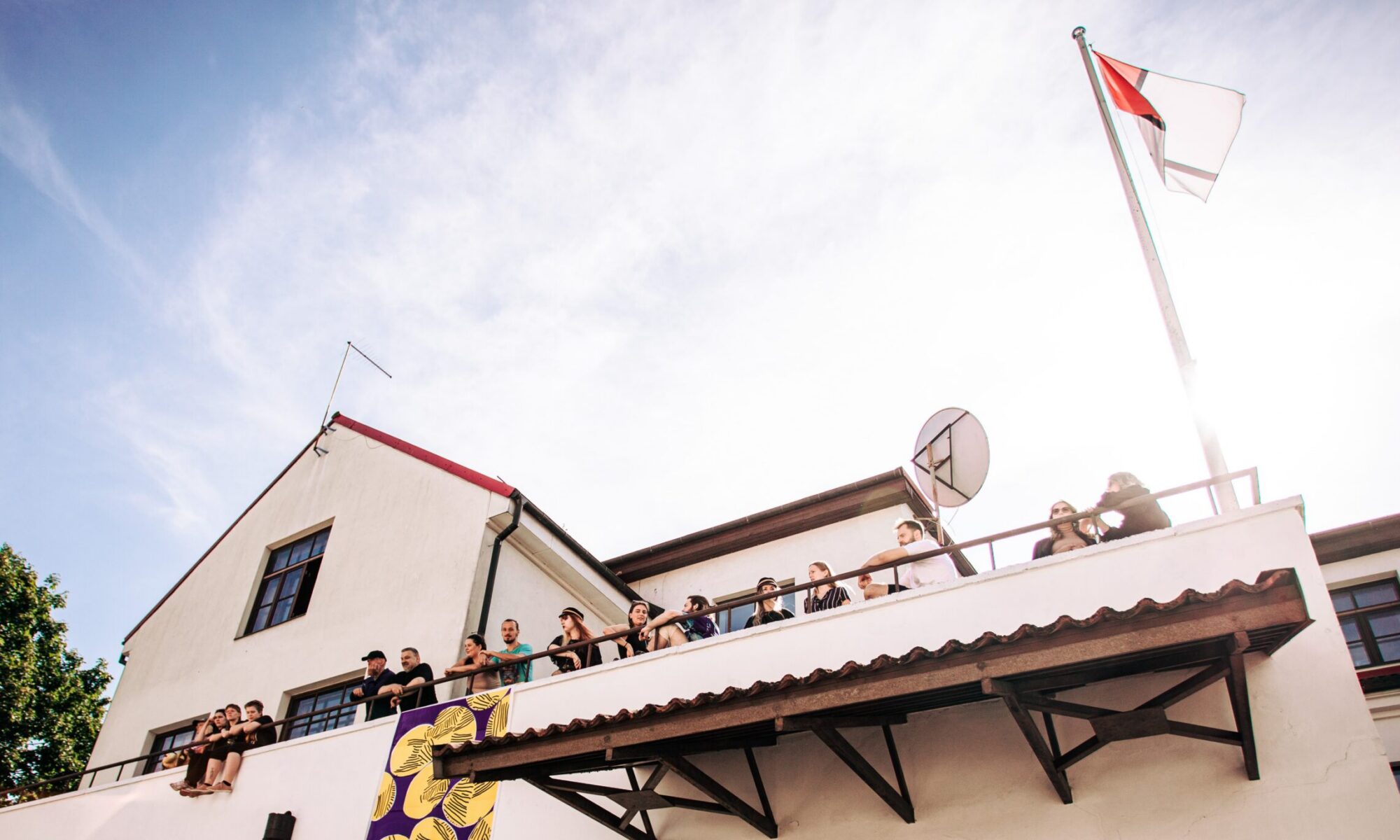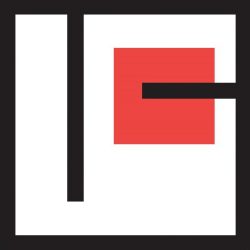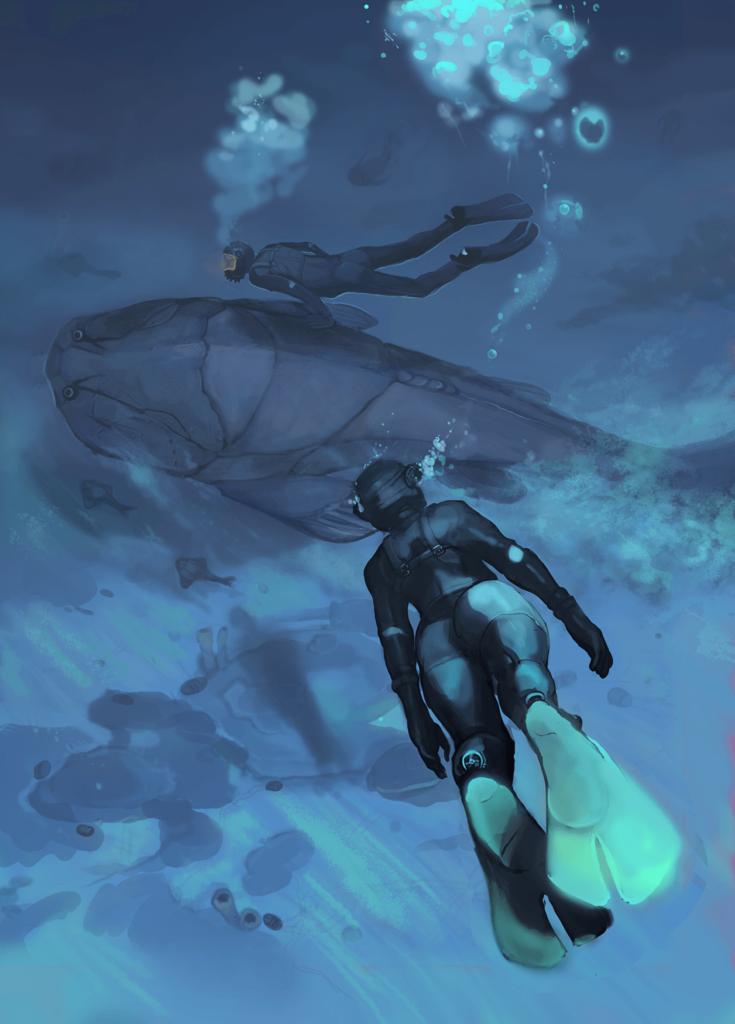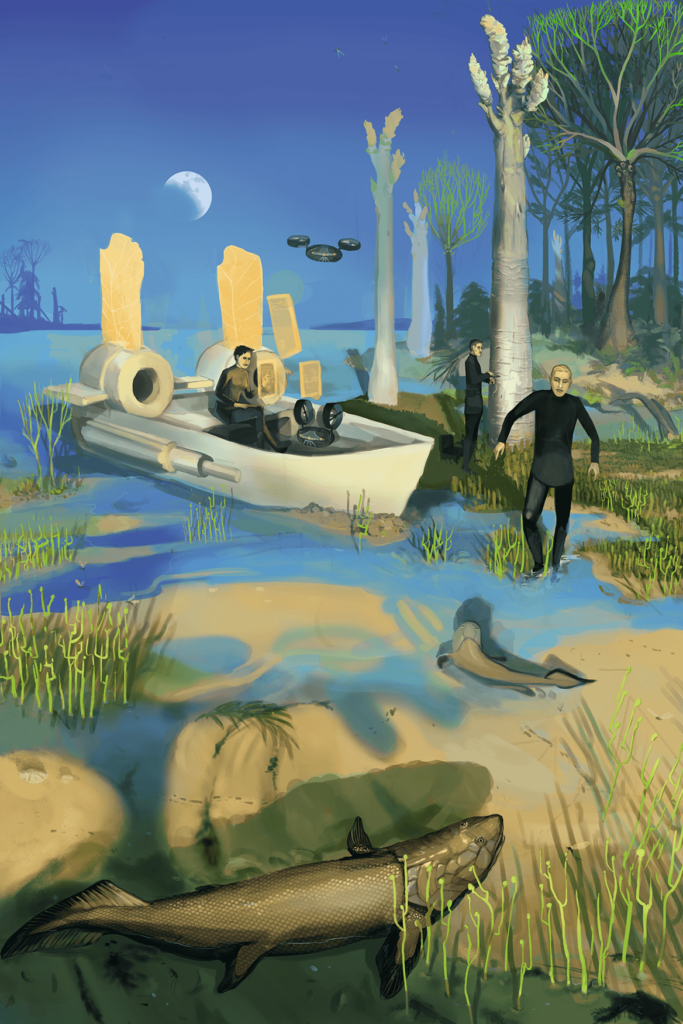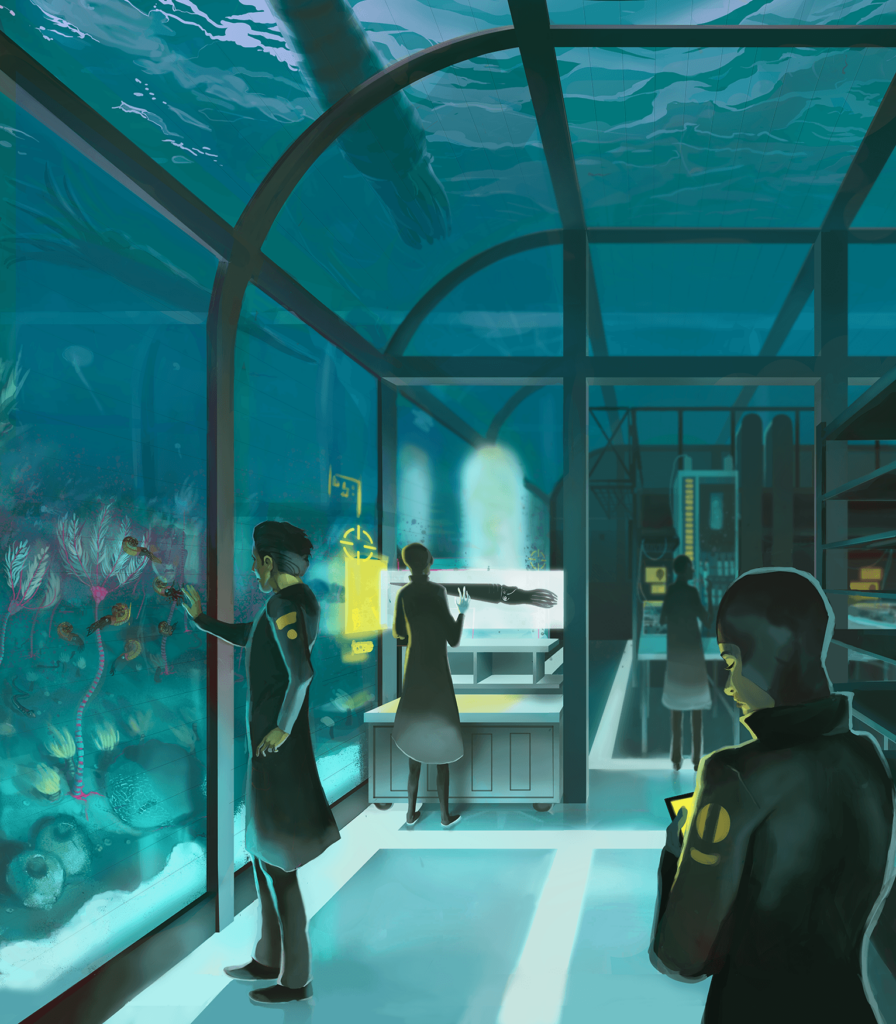Olen loonud lõputööteemal „Paleokunst ehk illustratsioon paleontoloogias“. Tööga kaasnev kirjalik osakoosneb kolmest peatükist. Esimeses peatükis käsitlen ülevaatlikult paleokunsti ehk paleontoloogilise illustratsiooni tähendust ning ajalugu erinevate ajastukohaste kunstnike võtmes.Teises peatükis olen kirjutanudpaleontoloogilise illustratsiooniolukorrast tänapäeval, arutledes kamõningate põhimõteteja problemaatika üle. Kolmandas peatükis annan ülevaate oma lõputöö praktilisest osast. Praktilise osa käigus proovin ise kätt eelajaloolisest Eestis lähtuva paleokunsti loomisel, lisades juurde ka ulmelise elemenditulevikust saabunud ajarändur-uurijate näol,kelle kohalolu tagabempaatilise pidepunkti vaataja ja keskkonna vahel. Projektitulemuseks sai seeria neljast digitaal-maalist, miskujutavad veealust ordoviitsiumi, silurikorallrahusid ja nii devoni-ajastu merepõhja kui ka maismaad. Töö teostamise käigus õppisin paremini mõistma perspektiivi, vana-aegkonna elulugu ning bioloogia ja geoloogia terminoloogiat.Leidsin, et suudan luua omaenda kompositsioone, kuid samuti, et mul puuduvad vajalikud teadmised loomade-taimede anatoomiast rekonstrueerimaks nende välimust otse kivististe põhjal, mistõttu pidin korduvalt võrdlusmaterjalideksvõtma teiste inimeste tehtud joonised ja illustratsioonid. Sellegipoolest püüdsin võimaluse korral kasutada kivistisi illustraatorite tööde üle kontrollimiseks. Kuna töö mahtei võimaldanud mulsüveneda Eesti paleontoloogilise illustratsiooni ajalukkuarvan, et seda teemat oleks tulevikus hea edasi uurida.Tunnensellegipoolest, et olen töös seatud praktilise eesmärgi sooritanud. Arvan, et minu poolt kogetud probleemid olidosa loomeprotsessist ningomasednendega, millega seisavad silmitsi peaaegu kõik paleokunstnikud.
- – Eliina Uibu, 2020
I have created a thesis on the subjectof „Palaeoart: Illustration in Palaeontology” and comprised it of three chapters. In the first chapter I give an overview of the definition and history of „palaeoart“and palaeontological illustration, by exploring the changes in the medium through theworks of influential palaeoartists. In the second chapter I deal with the contemporarysituation of palaeontological illustration along with some of the principles and problems characteristic of the medium. In my third chapter I give an overview of the “practical” portion of my thesis,during which I followed the typical process of creating palaeoart based onthe lifeformsofprehistoric Estonia. A science fiction element has been added in the form of timetraveling researchers –this creative libertyis meanttoserve asan empathic anchorpoint between the viewer and the environments. The result is aseries of four digital paintings comprising of atunnel in theOrdovicianera, some Siluriancoral reefs and two representations of the Devonian era encompassing both its’ seabottom andcoastalland-life.The project improved my understanding of perspective and the Palaeozoic era, as well as biological and geological terminology.I found out that I can create my own palaeoart compositions, but also that I lack the necessary knowledge for reconstructing the anatomy of animals or plants based straight on fossil data, thus I had to repeatedly use other peoples’ illustrations as references. Nonetheles I gave my best to verify said illustrations based on the fossils, wherever possible.I think that the history of palaeontological illustration in Estonia is a topic that ought to be further researched in the future, as the volume of my current thesis project kept me from delving into it.Nonetheless I feel that I’ve fulfilled the goals I’ve set for myself within the thesis. I believe that the problems I experienced were part of the process and inherent to the ones faced by every palaeoartist.
- – Eliina Uibu, 2020
